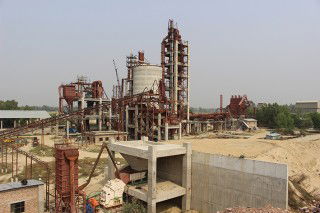Canada's Ministry of Environment and Climate Change updated its carbon tax policy framework this week and revealed that subsidy rates for industrial emitters were up across the board, but that cement, steel-making, lime and nitrogen fertiliser companies would be entitled to the highest subsidies.
"We've been clear since the beginning that we would consult with industry and environmental experts to find the best ways to reduce emissions, improve energy efficiency and stay competitive — and that’s exactly what we’ve done," Environment and Climate Change Minister, Catherine McKenna, said in an emailed statement. "We can't afford to let big polluters off the hook."
Cement producers were named among those industries that would will be entitled to a 90 per cent subsidy rate on their carbon tax burden, compared with a previously published subsidy rate of 70 per cent.
The CAD20/t carbon tax is expected to come into force in January and will apply to all emitters, but is designed to target companies that emit more than two-thirds of their direct competitors.
Those companies that emit more than their competitors will pay the carbon tax but can deduct either 80 or 90 per cent of their carbon tax burden. Companies that emit less than the majority of their peers will effectively pay no carbon tax and, given the subsidies, earn credits for having lower-than-average emissions.
In May Cement Association of Canada vice-president, Adam Auer, urged a senate committee on the carbon tax framework "to be attuned to the reality that our competitors in import and export markets don’t have similar pricing systems."
He said British Columbian cement plants have been losing market share since the province introduced a carbon tax in 2008, saying imports of cement have climbed from six per cent to 40 per cent.
The government in Ontario has eliminated the province's cap-and-trade system and is joining Saskatchewan in challenging the federal government’s jurisdiction to impose a carbon price on provinces.
Alberta, British Columbia, Manitoba and Quebec all have carbon pricing plans that are expected to meet federal requirements for 2019, meaning the federal system will not be imposed there.
Nova Scotia has a cap-and-trade system, which will kick in next year, could also meet federal requirements.
Prince Edward Island and New Brunswick both have put forward carbon-reduction plans that do not include a new price on carbon and therefore, are unlikely to meet the federal threshold. Newfoundland has not yet made public its plan.
